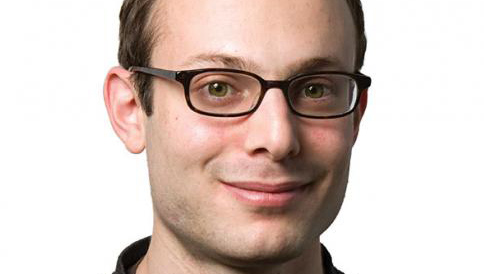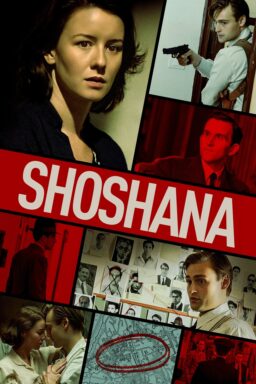The opening movies of the Cannes Film Festival and Directors’ Fortnight—the parallel, sorta-rival festival that takes place down the street and, since 1969, has presented itself as an edgier alternative to the main event—don’t always have something in common. But this year the two films offered a veritable call and response: The day after Jim Jarmusch’s bone-dry zombie picture “The Dead Don’t Die” opened the official section, the Fortnight returned fire with “Deerskin,” another bleak comedy that pushes its characters to extremes. Directed by Quentin Dupieux (who sometimes goes by Mr. Ouzo, and who also made “Rubber” and “Wrong“), the film concerns a man who develops an unhealthy ardor for his deerskin jacket.
Judging from early returns, the consensus is that Dupieux’s film has more laughs. It’s a movie with one joke, but it’s a good joke: A loser named Georges (Jean Dujardin, as comically rumpled and pathetic here as he was dapper in “The Artist”), introduced trying (and failing) to flush old outerwear down the toilet, plunks down more than 7,000 euros on a jacket that he is told is 100 percent deerskin. He is instantly smitten—with both the jacket and with himself. “Killer style,” he says of his new look again and again. (The mantra-like dialogue repetitions are another thing “Deerskin” has in common with the Jarmusch.)
The man who sells him the jacket throws in a free camcorder, which becomes convenient after he learns that his unseen (though briefly heard) wife has frozen their bank account. He pretends to be a filmmaker, conning money from a bar waitress (Adèle Haenel) who professes to have dreams of being an editor. (She has practiced by putting “Pulp Fiction” in chronological order.) Georges also begins conversing with the jacket, inventing a voice for it. He acquires more deerskin apparel. And the more covered in animal skin he gets, the more violently territorial he becomes—insisting not only that others pay attention to what he (delusionally) thinks are dashing looks, but also insisting that his jacket be the only one on Earth.
Dupieux sets up a not-at-all subtle parallel between Georges’s ego and the singleminded determination of a filmmaker. In order to bring a vision to fruition, directors must believe wholeheartedly in their stylistic ideas, even terrible ones; they must desire to be the objects of discussion (even if no one is actually talking about them); and they may even need to touch the brink of madness. Dupieux complements this auto-critique with deliberately ugly camera work. You’d have to be as crazy as Georges to think this movie looks sharp.
The pessimism of “Deerskin” is echoed in “The Dead Don’t Die,” which is already being underrated in some quarters simply because it’s not as funny as Jarmusch’s other films. This movie is to his body of work what “Art School Confidential” was to Terry Zwigoff’s—a case of an artist asking whether it’s even worth bothering to make jokes in circumstances that call for terminal dismay.

“The Dead Don’t Die” is set in a world where environmental devastation, politics, and addictive technology have pushed humanity to the brink—in other words, a world much like our own. When zombies begin to walk the earth, the only options are to join them, fight them (in the face of almost inevitable loss), or—if you’re lucky—leave civilization entirely to go forage in the woods. (Just as Zwigoff did with the Jim Broadbent character in “Art School Confidential,” Jarmusch grants himself an on-screen surrogate—a forest-dwelling hobo played by Tom Waits who seems to be the only one with a sufficiently gloomy outlook on what’s happening.)
Admittedly, this view—that the movie is intended as a howl of resignation—may be a minority one. When I briefly spoke to Chloë Sevigny the day after the film’s premiere, she seemed to sense my outré take. “You look so sneaky—what do you have up your sleeve?” she asked. (She also apologized for being “so braindead”—har har; it’s a zombie film—the nature of Cannes is that actors often wind up meeting with journalists the mornings after they’ve been out late celebrating their premieres.)
Sevigny, who worked with Jarmusch before on the short “Int. Trailer. Night” (2002) and “Broken Flowers” (2005), didn’t make him sound like a filmmaker ready to throw in the towel. “Jim was very lighthearted about the whole thing,” she said.
Her character—a bespectacled police officer named Mindy, a foil to Adam Driver and Bill Murray’s running buddy-cop routine—is pivotal, in part because she’s one of the few people on-screen who seems to greet the zombie apocalypse with the feelings of terror it deserves. “Mindy’s desperation is something the audience kind of needs, because everybody else is pretty nonchalant” about the onslaught, she said.
Last night was the first time she saw the film, and she wondered about how it was received by the audience. “A film like this in Cannes, it’s a hard play—comedy,” she said. “Because the timing is off reading the cards for most of the audience. And the screen is so big.”
Sevigny, who has been coming to Cannes since 1996 with “Trees Lounge,” also has a short she directed, “White Echo,” competing at this year’s festival. There’s a ghostly figure in that film, too—although Sevigny doesn’t see it as similar to “The Dead Don’t Die.” The relationship of the main character (Kate Lyn Sheil) to the supernatural” in “White Echo,” Sevigny explains, “is just a stand-in for any talent or desire.”
So count allegories about artistry as the festival’s early (or is it perennial?) theme.












